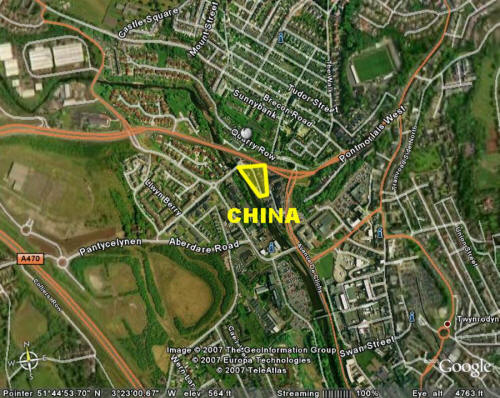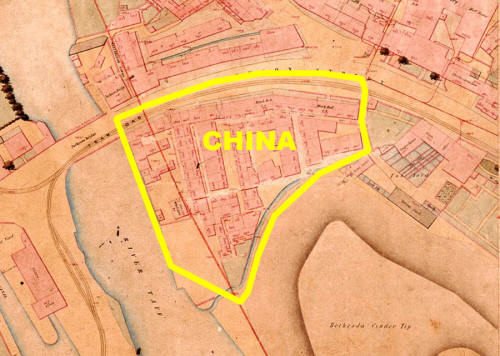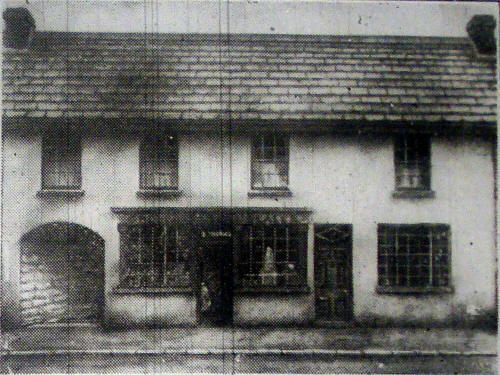| |
|
There was district in Merthyr Tydfil south of the Brecon road and
bounded by the canal and the Abermorlais / British tip (not far from
Bethesda Chapel), which was known as ‘China’. There was not one Chinaman
in nineteenth century ‘China’, although the district ‘China’ in Merthyr
Tydfil did have its own Emperor. ‘China’ was not a Chinatown in the same
way places of this name exist today. ‘China’ may not have been unique,
as every large city had its rough ‘no go’ area, but at one time it was
the most notorious district in the whole of Wales. The terms from
‘China’ and ‘Chinese’ are used frequently in the police reports, but
always with inverted commas to indicate that this was merely a
nickname. The census returns, which were taken every ten years from
1841, prove that the residents of ‘China’ were from all over the
country. These ‘Chinese’ residents were mainly English, Irish and Welsh,
but at times there were also some Germans and Eastern Europeans. A
Jewish businessman was ridiculed in the newspaper for spending too much
time with the ‘ladies of China’ until he found himself robbed by them.
There were a number of Merthyr Tydfil newspapers published from 1832
onwards and the Merthyr Telegraph had long accounts of ‘China’, mainly
under the ‘Police Court’ column. When young men stray into China and
escape with little more than the clothes on their backs, generally the
judge had very little sympathy for them for being foolish enough to
enter this dangerous area.
There are two interesting articles written on the subject, one by the
historian David Jones, who was the expert on crime in Wales and the
other by Doctor Keith Strange, whose doctorate is about Merthyr Tydfil
in the 1840s. Keith’s fascinating article, ‘The Celestial City’
describes ‘China’ as a den of drunkards, thieves, rogues and
prostitutes, whose general behaviour was completely foreign to the
normal hard working respectable Welsh Chapel way of life. He once said
that he thought the term ‘China’ might have arisen because Britain had a
long ‘Opium War’ with China and the early nineteenth century newspapers
are full of stories of China as the dreadful land of our enemies, and
foreigners; equally ‘China’ in Merthyr Tydfil was the land of
undesirables and foreigners (possibly also the place where opium could
be smoked). China was in the news and it was known that here was the
‘Forbidden City’ which no one could enter and return from alive. Few
strangers were able to return safely from ‘China’ in Merthyr Tydfil with
all their possessions. The attitude of police was that you entered
China at your peril; certainly the police themselves did not dare go
into China. Entering China was not easy as the district was bounded by
water, a dangerous smoking tip and a row of large dwellings, the
entrance to ‘China’ was under an arch and there were door-keepers to
send messages warning the residents. However, by the 1880s there were
reports in the Merthyr Express that ‘Old China is not the same’.
Gradually ‘China’ declined; the professional criminals moved to Cardiff
for richer pickings and in the twentieth century ‘Riverside’, which also
had an entrance under an arch, became the most notorious part of the
town. Although it must be said that many people today remember old
Riverside as a place with very decent people.
Carolyn Jacob. |
|
|



